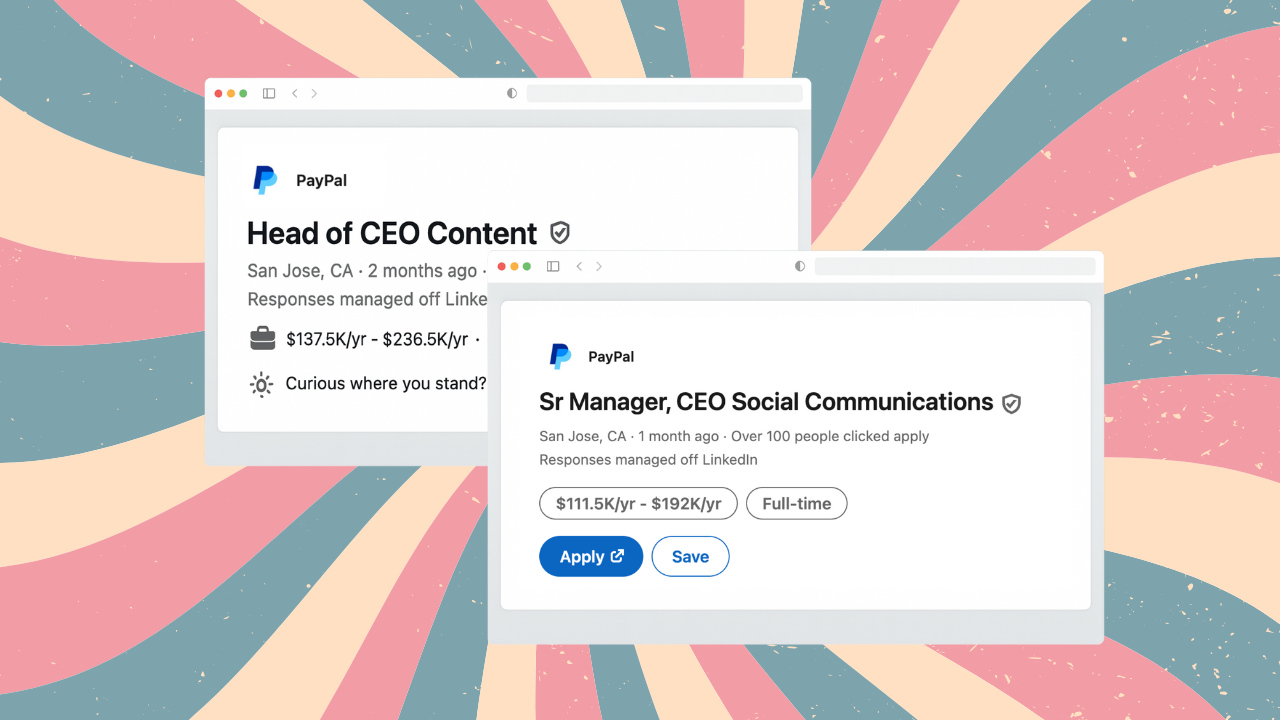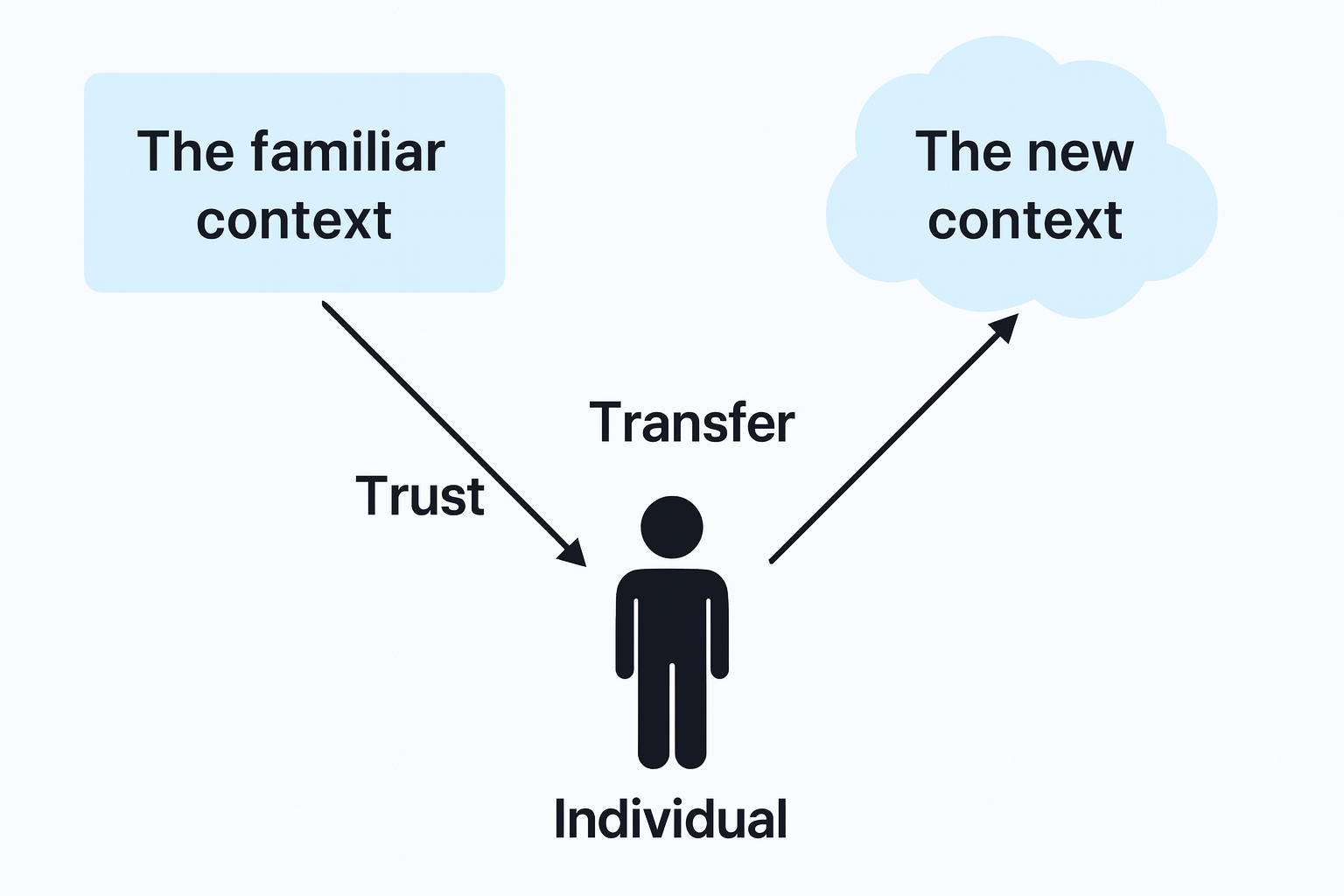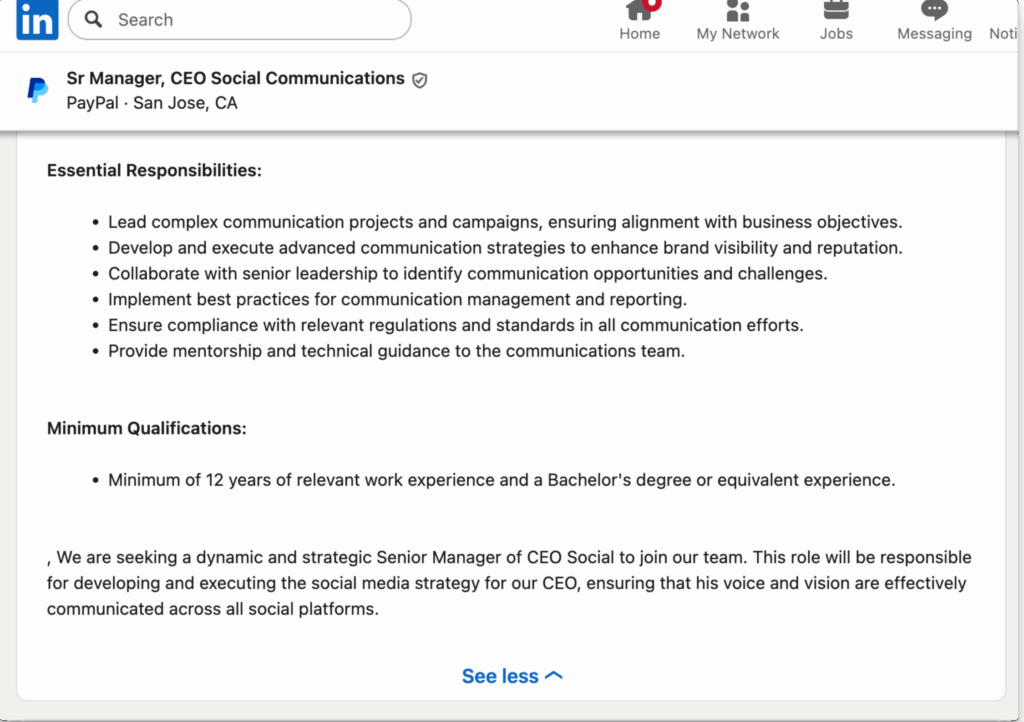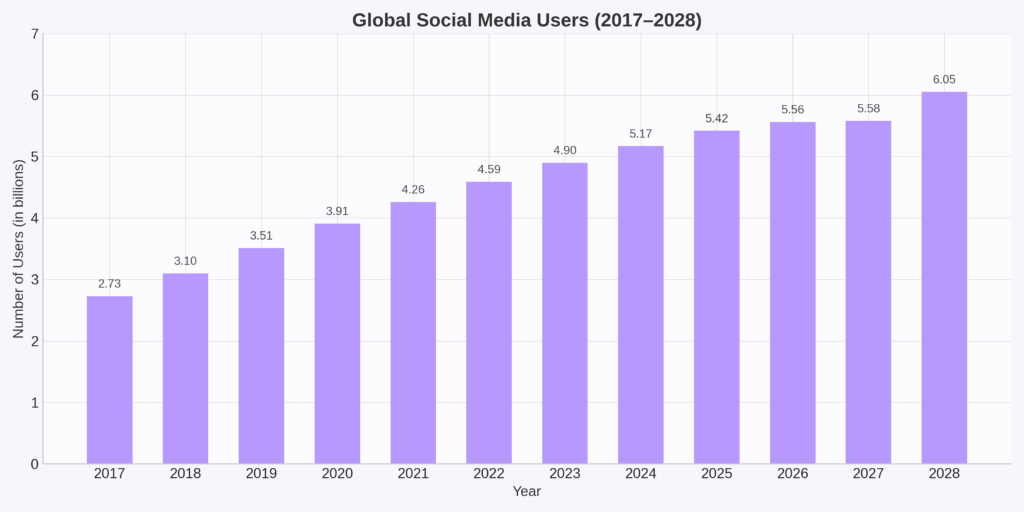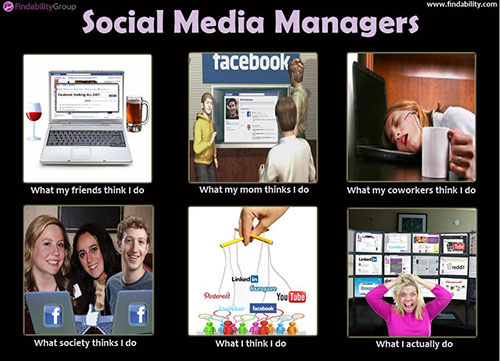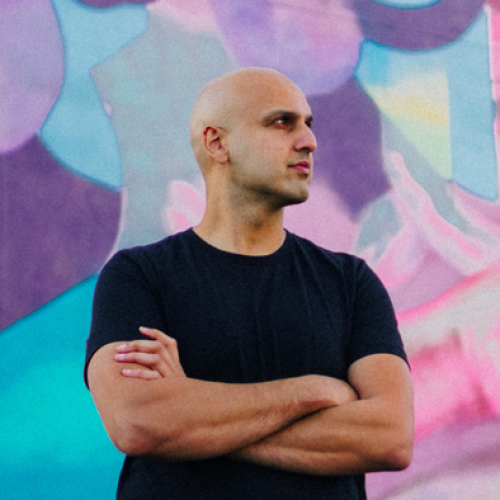PayPal just posted a job that should make every CEO pay attention. They’re hiring a “Senior Manager of CEO Social” and a “Head of CEO Content” with a minimum of 12 years of experience, reporting directly to senior leadership. The roles blends traditional communications with modern digital know-how, handling big projects, shaping the CEO’s message, making sure everything follows the rules, and even coaching senior leaders.
This isn’t just one strategic hire, they’re building a team. The Head of CEO Content will develop narrative strategy and manage Alex Chriss’s digital presence, while the Senior Manager executes day-to-day social strategy and campaign management. When a $31.8 billion company creates two senior-level roles simultaneously for CEO personal branding, as industry strategist Ghalib Hassam noted, ‘If a $31.8B revenue company can invest in their CEO’s personal brand, so can you.
This isn’t about going viral or chasing engagement metrics. This is about billion-dollar companies treating CEO social presence like investor relations. When Fortune 500s are creating senior-level roles dedicated exclusively to their CEO’s social media strategy, something fundamental has shifted in how business gets done.
The stakes couldn’t be higher. While most executives are still hiding behind corporate communications and press releases, their competitors are building direct relationships with customers, employees, and investors through strategic personal branding. And the companies that understand this shift are willing to pay senior-level salaries to get it right.
Key Takeaways
- Fortune 500s are treating CEO personal branding as strategic business infrastructure. PayPal’s creation of two senior-level roles (requiring 12+ years experience) for CEO social strategy signals that billion-dollar companies now view executive visibility as essential as investor relations—not optional marketing.
- CEO invisibility has become an existential business risk. With 82% of consumers more likely to trust companies with visible leaders and AI systems cataloging industry authorities, silent CEOs are losing market share to competitors who build direct relationships with customers, employees, and investors.
- The ROI is undeniable and measurable. Companies with highly visible CEOs outperform the stock market by 15% annually, while strategic CEO thought leadership delivers 14x ROI through shortened sales cycles, premium pricing capability, and compound network effects that create competitive advantages.
Why Traditional CEO Communication Strategies No Longer Work
For decades, CEO communication followed a predictable pattern: quarterly earnings calls, annual reports, carefully scripted interviews with industry publications, and the occasional keynote at major conferences. The message was filtered through multiple layers including PR teams, legal reviews, and corporate communications departments, before reaching the public.
But here’s the problem: customers, employees, and investors don’t trust faceless corporations anymore. They want to see the human beings making the decisions. Research shows that 82% of consumers are more likely to trust companies with visible senior leaders, and that number jumps to 77% for actual purchasing decisions when the CEO is active on social media.
The shift goes deeper than trust metrics. We’re witnessing a fundamental change in how business relationships form and how deals get made. When prospects research solutions today, they’re not just comparing features and pricing. They’re forming opinions about companies based on the leaders they can actually see and connect with.
This is essentially a transfer of Name, Image, and Likeness (NIL) value from the CEO to the corporate brand. Every CEO already possesses NIL assets—their reputation, expertise, and personal authority. The question is whether they’re strategically leveraging these assets to enhance their company’s market position or letting competitors capture that value instead.
In the age of AI, your company’s story is only as visible as its leaders. An AI won’t just explain what you sell; it will find and connect with the people behind your brand, using interviews, social content, and public appearances to build a narrative. If your leadership is invisible, your competitor’s CEO will get the spotlight. Your visibility in AI is now a competitive advantage, and a lack of it means you’re not even in the conversation
This triggered a corporate response we’re seeing across industries. Employee retention has become tied to leadership visibility—teams want to work for leaders they can see and respect, not anonymous executives hidden behind corporate walls. Investor confidence increasingly correlates with CEO social presence, as VCs and institutional investors follow leadership activity as market indicators. B2B buyers research leadership teams before major purchases, and journalists quote CEOs who are already part of the conversation, not those who emerge only during crisis management.
What Fortune 500 Companies Are Actually Hiring For (It’s Not Social Media Management)
When PayPal requires 12+ years of experience for their CEO Social Com or Head of CEO Content role, they’re not hiring a social media manager. They’re investing in executive positioning at the strategic level. Look at the actual job requirements: leading complex communication projects, developing advanced communication strategies, collaborating with senior leadership, ensuring regulatory compliance, and providing mentorship to communications teams.
This is a hybrid role that didn’t exist five years ago. It combines the strategic thinking of a Communications Director with the platform fluency of a digital native and the business acumen of a senior advisor. The person in this role needs to understand how CEO voice impacts stock price, employee morale, customer perception, and competitive positioning, all while navigating SEC regulations, legal considerations, and risk management protocols.
What they’re NOT looking for tells the story as clearly as what they are. This isn’t about junior social media managers who post company updates or generic content creators who chase engagement metrics. Companies aren’t treating this like traditional marketing because the stakes are completely different.
What they ARE looking for is strategic thinkers who understand how CEO positioning affects business outcomes. They want risk managers who can balance authenticity with compliance requirements. They need authority builders who can make CEOs the go-to voices in their industries without creating liability or reputation risks.
The role requires someone who can think like a board member while executing like a content strategist. They need to understand investor relations, employee communications, customer psychology, and media dynamics, then translate all of that into a cohesive social strategy that builds long-term authority rather than short-term attention.
The ROI Behind CEO Personal Branding
The economics behind this trend are impossible to ignore. When customers trust a CEO personally, that trust automatically transfers to the company, creating what psychologists call the “halo effect.” Companies with highly visible CEOs outperform the stock market by up to 15% annually, and research indicates that investment in CEO thought leadership can yield a 14x ROI.
But the real business impact shows up in sales metrics. Sales cycles shorten when prospects recognize leadership personally. Close rates improve when customers feel connected to the people behind the company. Premium pricing becomes possible when authority and trust are established before the first sales conversation.
But the real business impact shows up in sales metrics. Sales cycles shorten when prospects recognize leadership personally. Close rates improve when customers feel connected to the people behind the company. Premium pricing becomes possible when authority and trust are established before the first sales conversation.
This mirrors the influencer marketing revolution that’s already transformed B2C. While B2C brands have been leveraging individual creators for years, B2B has been slower to recognize that decision makers want to buy from people, not faceless corporations. The most successful B2B companies are beginning to treat their CEO’s personal brand as a distribution channel for authentic, human content that cuts through the noise of generic corporate messaging.
Consider the attention marketplace reality: 6 billion people spend over 2 hours daily on social platforms. Decision makers are forming opinions about companies based on the leadership they can see and engage with. While your competitors hide behind corporate accounts and anonymous spokespeople, visible CEOs build relationships with future customers, creating competitive advantages that compound over time.
The network effect multiplies everything. Strategic CEO social presence leads to media quotes, podcast invitations, speaking opportunities, and industry recognition. Each appearance reinforces authority and expands reach exponentially. Every media mention becomes a trust signal that makes the next opportunity more likely.
I’ve watched this play out with clients who understand the game. Neil Patel’s personal brand helps his $100M advertising agency compete with billion-dollar competitors. When CMOs are putting together RFPs, they’re asking AI who the top players are, and Neil’s digital presence consistently puts him in those conversations. His agency wins deals before traditional competitors even know there’s an opportunity.
Brian Halligan from HubSpot tracked this obsessively. He found that when prospects recognized and trusted him personally before sales calls, his close rate consistently improved. Same product, same team, same pitch. The only difference? Personal recognition and trust.
The risk of CEO invisibility is becoming existential. AI systems are cataloging who the authorities are in every industry. Silent CEOs become “other options” instead of preferred choices. Competitors with visible leadership capture market mindshare while invisible executives watch opportunities flow to more recognizable names.
How Top CEOs Are Building Personal Brands That Drive Business Results
The patterns become clear when you study CEOs who’ve mastered strategic positioning. Jensen Huang from NVIDIA doesn’t just post about company updates—his consistent thought leadership on AI chips positions NVIDIA as the industry leader. When journalists need quotes about artificial intelligence, when investors think about semiconductor futures, when customers consider AI infrastructure, Jensen is the name that comes to mind.
- Marc Benioff from Salesforce has turned his personal brand into a powerful extension of the Salesforce ecosystem. His consistent commentary on the future of work, equality, and business transformation reinforces Salesforce’s position as more than just a CRM company, they’re thought leaders shaping how business operates. Every post about stakeholder capitalism or digital transformation strengthens Salesforce’s market positioning.
- Daniel Ek from Spotify owns the intersection of music, technology, and creator economics. His LinkedIn content about the future of audio, creator monetization, and platform innovation doesn’t just promote Spotify—it positions him as the definitive voice on how digital platforms should serve creators. This authority translates directly into Spotify’s competitive advantage in creator partnerships and platform development.
- Gary Vaynerchuk has turned his personal brand into a content engine that drives massive value for VaynerMedia. His daily posts, podcast appearances, and speaking engagements don’t just build personal recognition, they demonstrate VaynerMedia’s marketing expertise in real-time. Prospects see Gary’s reach and engagement as proof of concept for what his agency can deliver.
The business impact is measurable. These CEOs don’t just get more media coverage, they drive actual business results. Their companies command premium valuations, attract top talent, and win deals at higher rates than competitors with invisible leadership.
The Identity, Trust, and Leverage Framework To Create Corporate Value
The most successful CEO social strategies focus on three outcomes that don’t show up in analytics dashboards but determine everything else: Identity, Trust, and Leverage.
- Identity is about positioning—not just who you are, but who people think you are when your industry comes up. It’s the mental space you occupy in someone’s mind. The right identity creates instant recognition and makes people stop scrolling because your presence signals value. Jensen Huang owns AI chips. Marc Benioff owns the future of work. Daniel Ek owns creator economics. Gary Vaynerchuk owns social media marketing. That’s not accident, that’s strategic positioning. This concept mirrors what we see in NIL (Name, Image, and Likeness) frameworks. Your CEO’s name recognition, visual identity, and unique persona are already business assets. The question is whether you’re strategically developing these assets to create compound value for your company, or allowing competitors to dominate the mental real estate in your industry.
- Trust is the speed at which people believe and act on your ideas. You can have massive reach, but without trust, none of it converts to business outcomes. Trust is what transforms CEO visibility into shortened sales cycles, higher close rates, and premium pricing. It’s the difference between someone watching your content and someone buying from your company.
- Leverage is when things start to compound. It’s your ability to create outsized results from small inputs. With enough trust and positioning, a single piece of content can drive sales, fill events, or spark opportunities without constant promotion. You’re no longer chasing momentum—you’re creating it.
When these three work together, your personal brand becomes intellectual property. It becomes a business asset that carries weight, attracts opportunity, and compounds in value over time. This is exactly what Fortune 500s are buying when they hire senior strategists for CEO social media—they’re investing in the systematic development of executive NIL assets that transfer value to the corporate brand.
The most sophisticated companies understand that their CEO’s personal authority isn’t separate from their corporate brand, it’s a multiplier that enhances every other marketing and sales effort. When your CEO is recognized as an industry authority, it doesn’t just drive personal opportunities; it creates a halo effect that makes your entire company more credible, trustworthy, and desirable to work with.
Why CEO Social Media Strategist Jobs Will Become Standard at Every Fortune 500 Company
The PayPal posting is just the beginning. As more Fortune 500s see the competitive advantages of strategic CEO positioning, this will become as standard as investor relations or crisis communications. Early movers gain disproportionate advantage, but the window for first-mover benefits is closing quickly.
The talent gap creates massive opportunities for professionals who understand both executive communication and social strategy. Most traditional communications professionals don’t understand platform dynamics, audience psychology, or content optimization. Most social media experts don’t understand executive positioning, regulatory compliance, or board-level strategic thinking.
The professionals who can bridge both worlds, who understand how to build CEO authority while managing corporate risk, will command premium positioning as this role category expands. Companies are willing to pay senior-level compensation because they recognize this isn’t just marketing support, it’s strategic business advantage.
What This Means for CEOs and Communications Professionals
When billion-dollar companies create dedicated senior roles for CEO social strategy, it signals a permanent shift in how business gets done. This isn’t about vanity metrics or personal fame, it’s about competitive advantage, market positioning, and business outcomes.
For CEOs, social presence is no longer optional. The question isn’t whether to build your personal brand, it’s how much market share you’re willing to lose while your competitors build relationships with your future customers. Your silence isn’t neutral; it’s a strategic choice that benefits your competition.
For communications professionals, a new career category is emerging at the intersection of strategy, compliance, and digital execution. The companies that understand this shift are willing to invest significantly in getting it right, creating opportunities for strategists who can deliver both authority and results.
The reality is stark: your customers are already forming opinions about your leadership based on your digital presence or lack thereof. Journalists are deciding whether to quote you based on your thought leadership. AI systems are cataloging who the authorities are in every industry. You can either be intentional about building your authority, or you can let others define your place in the conversation.
But you can’t opt out of having a reputation anymore. In the age of AI and social media, silence is a brand position, and it’s not a good one. The CEOs and companies who understand this are already moving. They’re not waiting for perfect conditions or complete strategies. They’re building the authority that will define their industries for the next decade.
The conversation about your industry is happening with or without you. But as Fortune 500s are proving with roles like PayPal’s CEO Social position, it’s a lot more profitable when you’re leading it.



